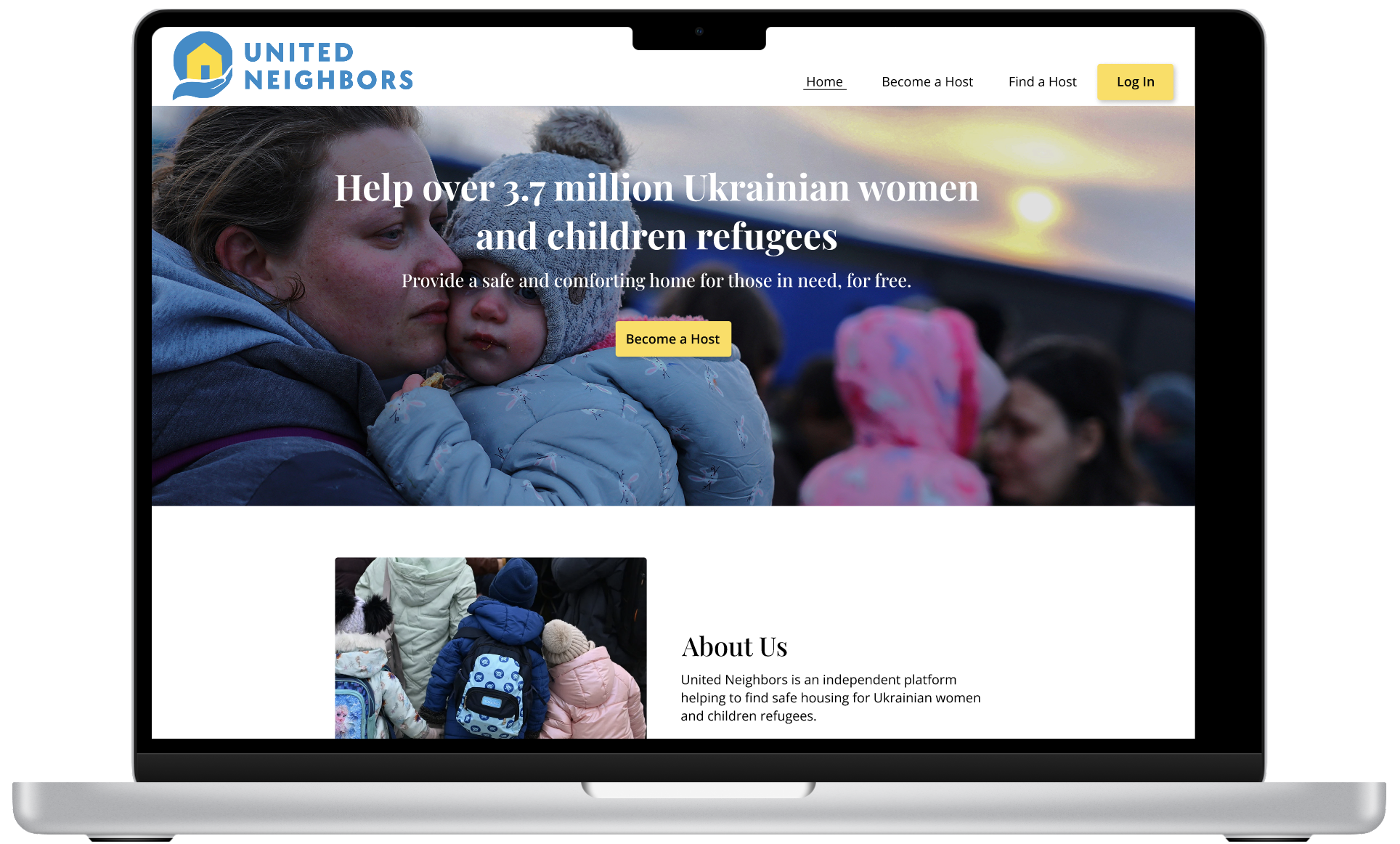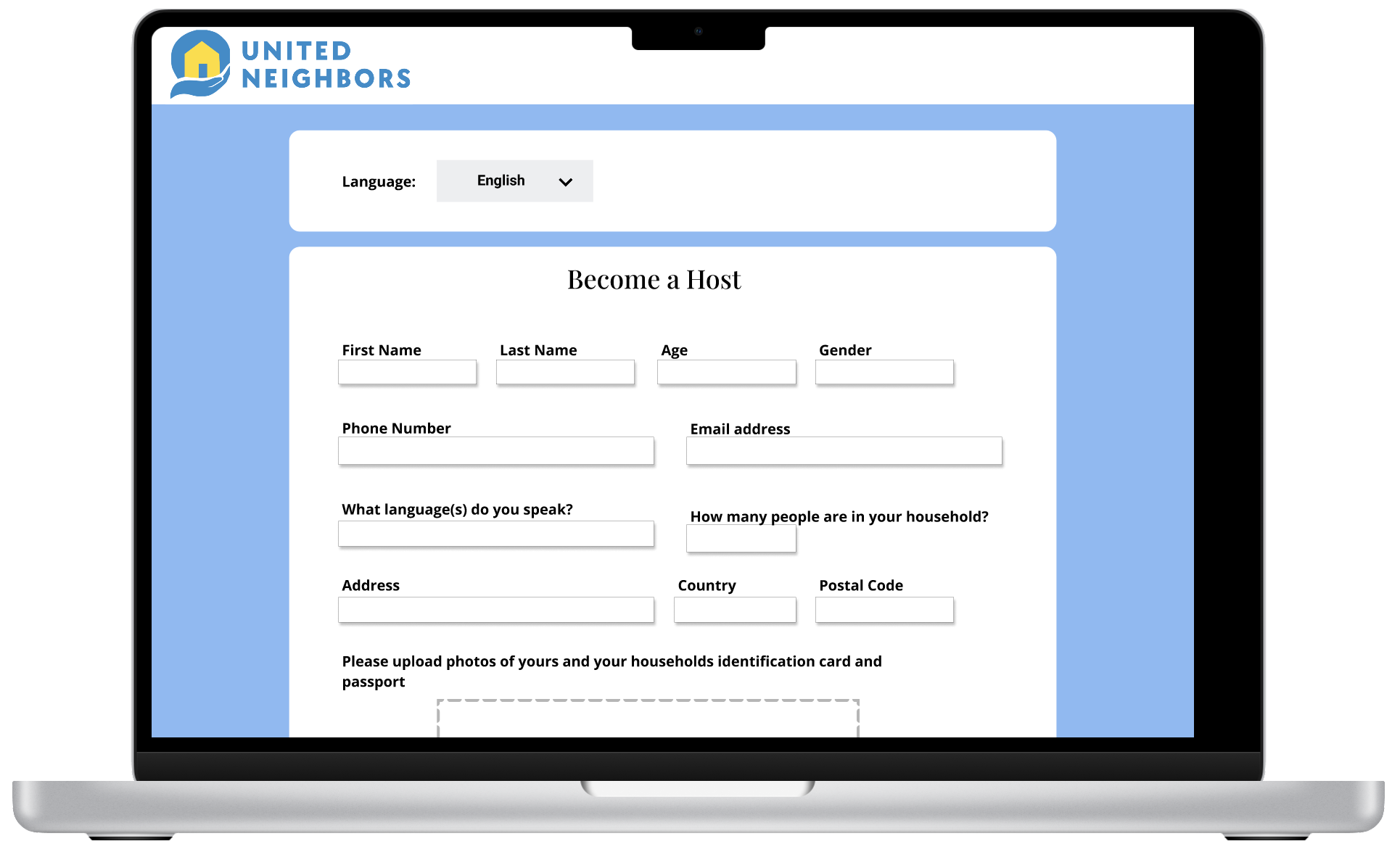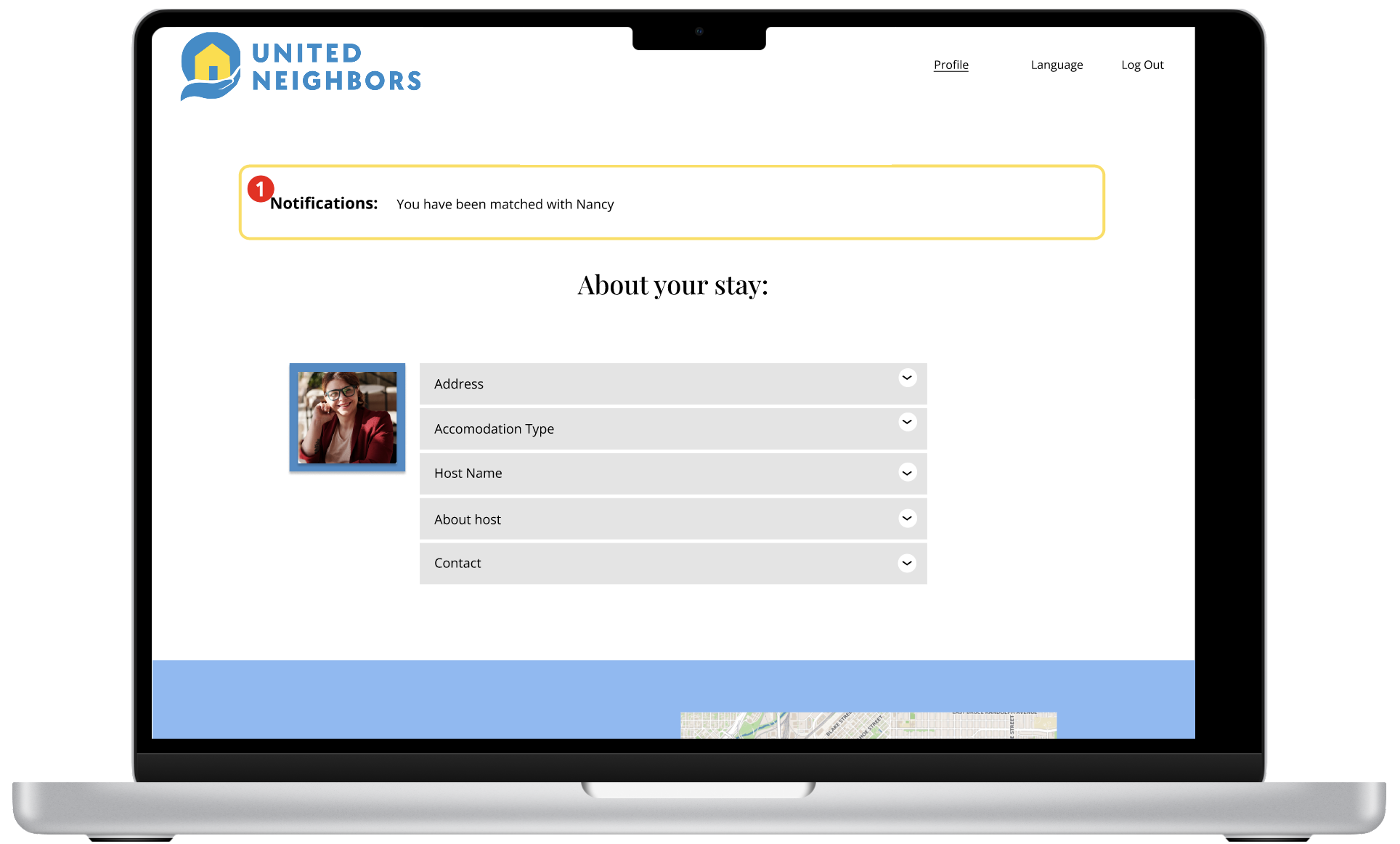United Neighbors
A housing platform designed for Ukrainian refugees to find safe and free housing across the globe. In addition, it fills the communication gap between refugees, hosts, and resettlement agencies. This case study was the winning project for the 2022 All-Women’s Break the Bias Virtual Hackathon.





Product Demo
The Project
Tools used:
The 2022 All-Women’s Break the Bias Virtual Hackathon was a 9 day challenge from March 23 - March 31. Each team was tasked to create a project that in some way benefits women, however, due to current events, participants were encouraged to take the war in Ukraine into their consideration.
As a Ukrainian woman, this subject deeply resonates with me. This hackathon provided a key opportunity for me to leverage the devastating impact that the war had on myself into the energy and knowledge towards a project that could positively impact Ukrainian women and children. This was the inspiration behind how I came up with the idea for United Neighbors.
I served as the Team Lead in a group of five UX Designers and Web Developers from different parts of the world to create United Neighbors. On the final day of the hackathon, we presented to four judges and 85+ attendees at the Empowered Women’s Leadership Summit. United Neighbors won first place, out of 10 teams and over 45 participants in the hackathon.
The Team
Planning
Research
As of May, 2022, nearly 6 million Ukrainians have fled their home country due to the war.
https://www.bbc.com/news/world-60555472
To gain more insight on the topic and narrow down the scope, I started by conducting simple secondary research through reading current events news articles as well as past and present studies done focusing on refugees.
In addition to secondary research, I also conducted primary research by interviewing Cassie L., a Senior Program Analyst at the U.S. Department of State who works on the Refugee and Missions program. She provided me with insight gained through experience of working with refugees and resettlement agencies, and the many challenges that come with it.
Key Findings
Because men ages 18-60 are not allowed to cross the border, approximately 90% of refugees are women and children.
When finding temporary housing for refugees, vetting and ensuring their safety becomes a challenge. Female refugees are at a much higher risk of danger.
Existing language barriers and cultural norms between refugees and hosts.
Resettlement agencies are understaffed, therefore the process is longer when finding temporary housing.
Lack of resources for refugees to settle into their communities.
Competitor Analysis
From observations of seeing people from all over the globe offering their vacation rental, a spare room, or even a bed for refugees to sleep on, I knew that there was an opportunity in the market for a platform that connects hosts with refugees.
To identify gaps in the market, I started by listing out the existing solutions on a Miro board and observing their best capabilities as well as capabilities that could be improved.
I then transferred the knowledge gained from conducting competitor research onto a competitor comparison board that shows which features the existing solutions on the market have, and which features they lack.
User Personas
After our research, my team and I created user personas to build empathy with our users. This helped us understand pain points that the users might be experiencing, and how United Neighbors can provide a solution.
User Task Flow
When creating the user task flow to identify key steps that the user would be taking, I went through two iterations of the solution. The first iteration took into consideration every path that the user might take, with features and ideas listed next to the steps. However, the second iteration is a much simplified version. Due to the time constraints of the hackathon and limited time that refugees have to find housing, we had to prioritize and focus on the main steps and pages to further simplify the process.
Iteration 1:
Iteration 2:
Design Process
Sketches
Once we had the user task flow, we knew that the website would feature 4 key pages: home page, questionnaire form, confirmation page, and profile page. My teammate and I split up sketching the low-fidelity wireframes. I was in charge of the profile page wireframes, and went through 2 iterations of the design. We wanted the final product to be as user-friendly as possible, therefore in the second sketch I moved the notifications feature to the top of the profile page to emphasize important information in the page hierarchy.
Home page:
Profile page, iteration 1:
Profile page, iteration 2:
Low-fidelity Wireframes
Taking into account the user research and personas, I started with creating low-fidelity wireframes using Figma to visualize the key elements and features of the website.
Style Tile
To get a better idea of the visual design of the website and to keep it consistent across all pages, my team and I created a style tile. I was in charge of creating the logo and photographic material. I took into account the colors of the Ukrainian flag: yellow to represent the golden wheat fields and richness of Ukrainian soil, and blue to represent blue skies. Both colors symbolize optimism and hope.
Key Pages
Home
The logo, problem statement, and our solution is at the top of the page hierarchy to answer the immediate question of who we are, and what we do. The background photo is of a Ukrainian woman holding her child, because women and children are our main target market.
Questionnaire Form
Vetting and accessibility were two of our main concerns when building United Neighbors. This is why various language options are at the top of the from for both hosts and refugees, followed by a list of specific and easy to understand questions, including photo and video options.
The answers to the questions are then reviewed by resettlement agencies and organizations before connecting users, to ensure maximum safety measures.
Profile
After logging in, refugees are led to their profile page. Once they are matched with a host, they can view details about their stay and contact the host.
The refugee can also access a map of the location that they will be staying at, including grocery stores, transportation, pharmacies, and more to help them settle into their communities.
Next Steps…
Conduct usability testing on the most recent prototype.
Expand service to beyond Ukrainian refugees, but refugees from all over the world.
Partner with existing businesses such as Zillow, Airbnb, and hotel chains.














